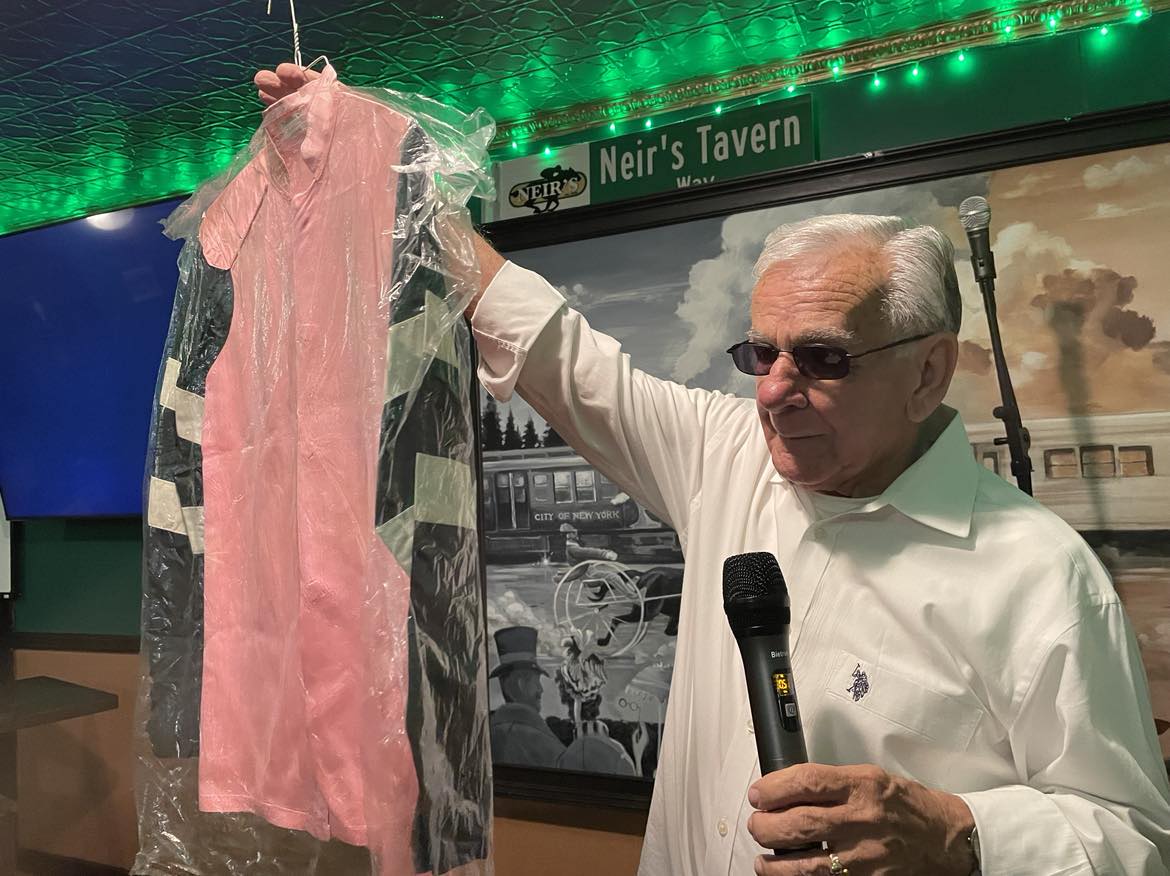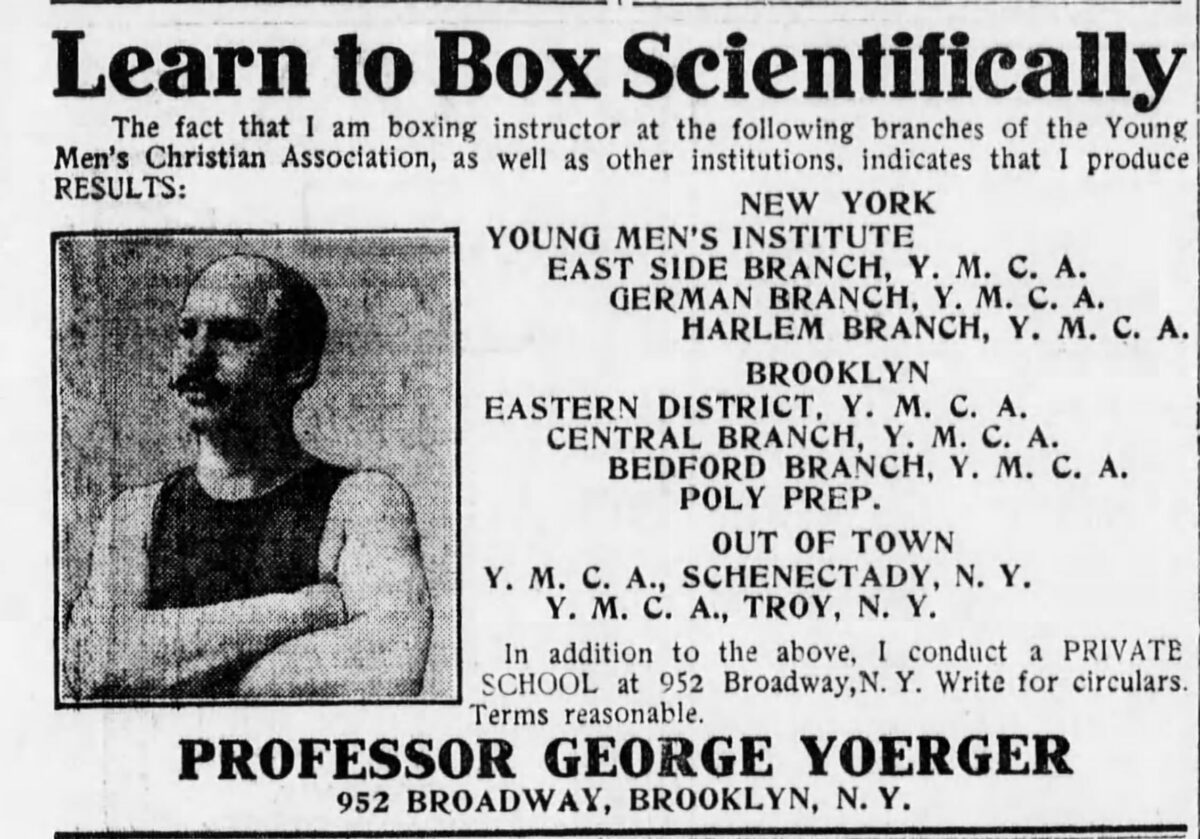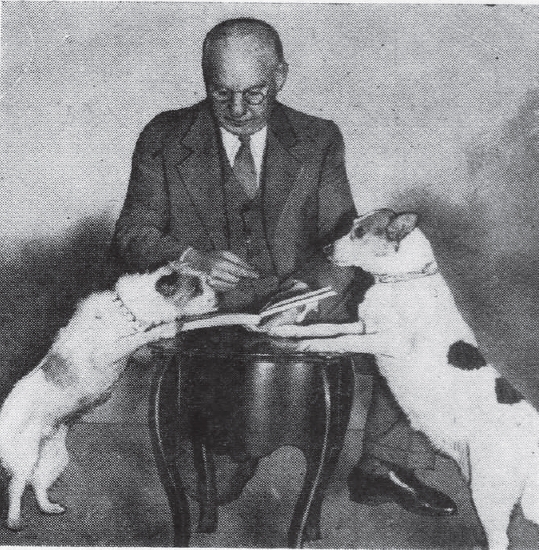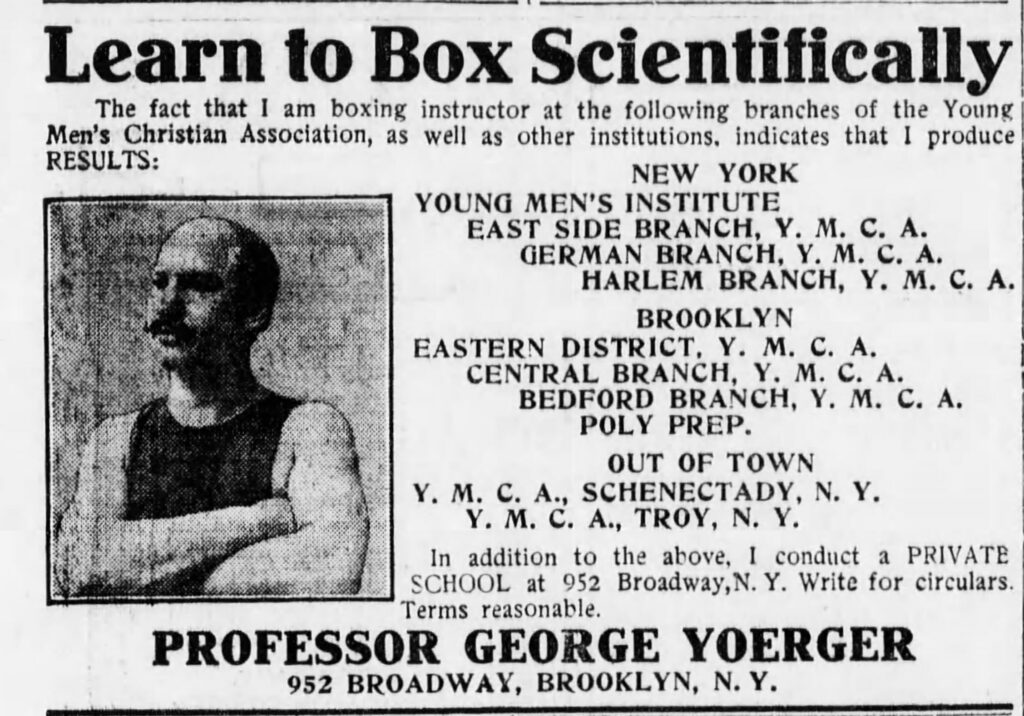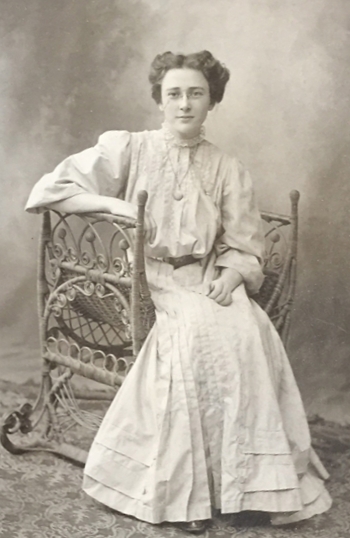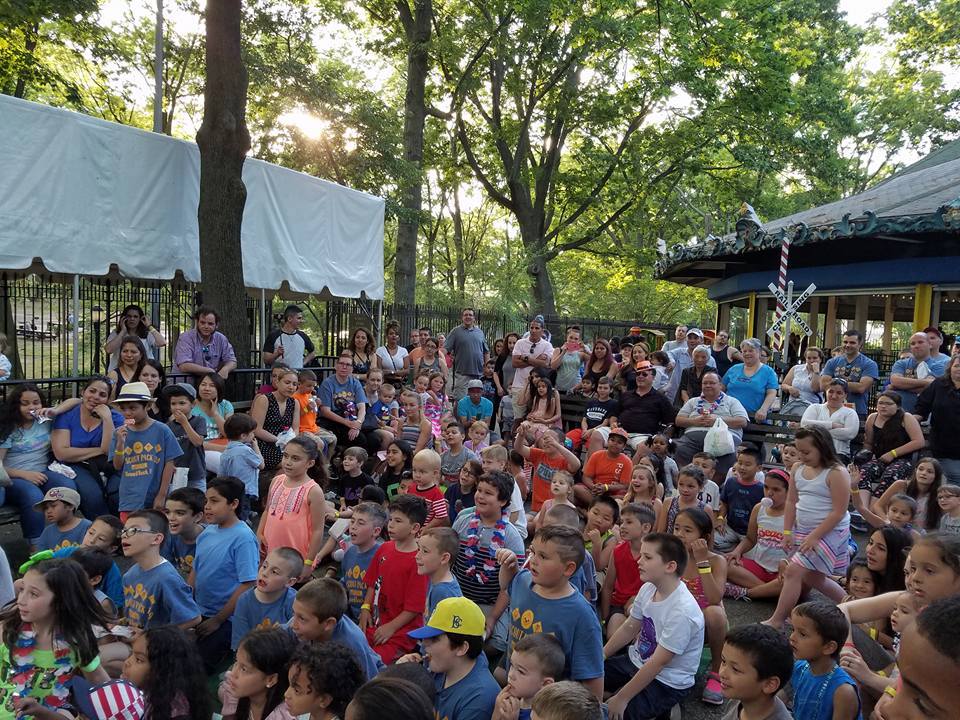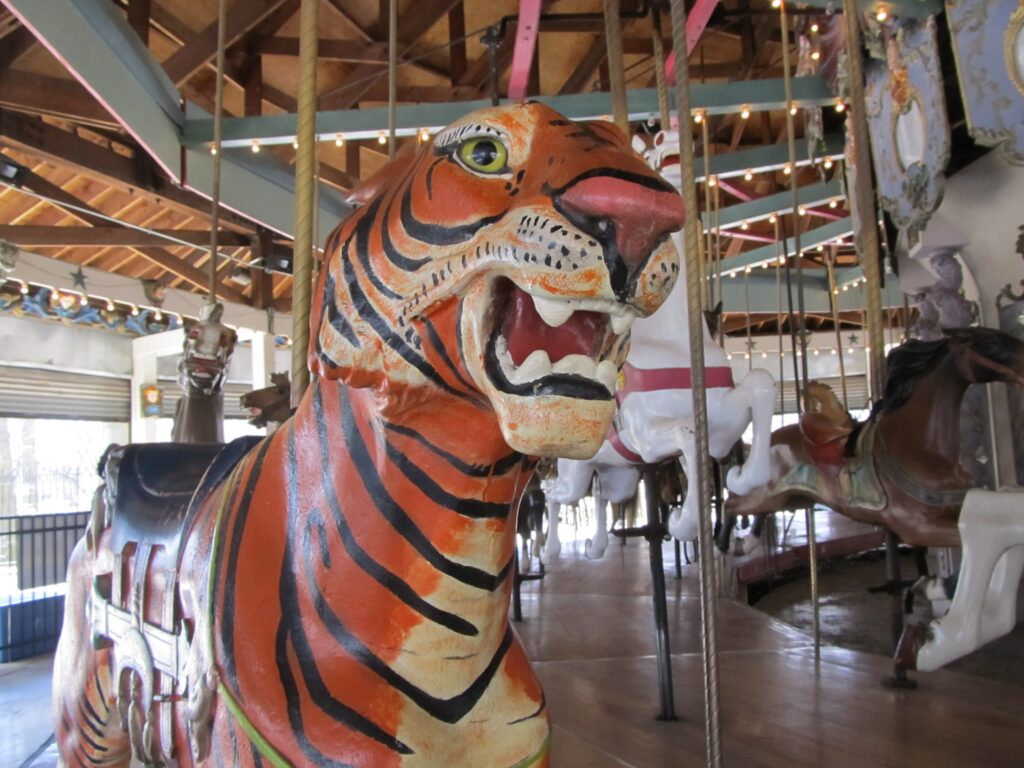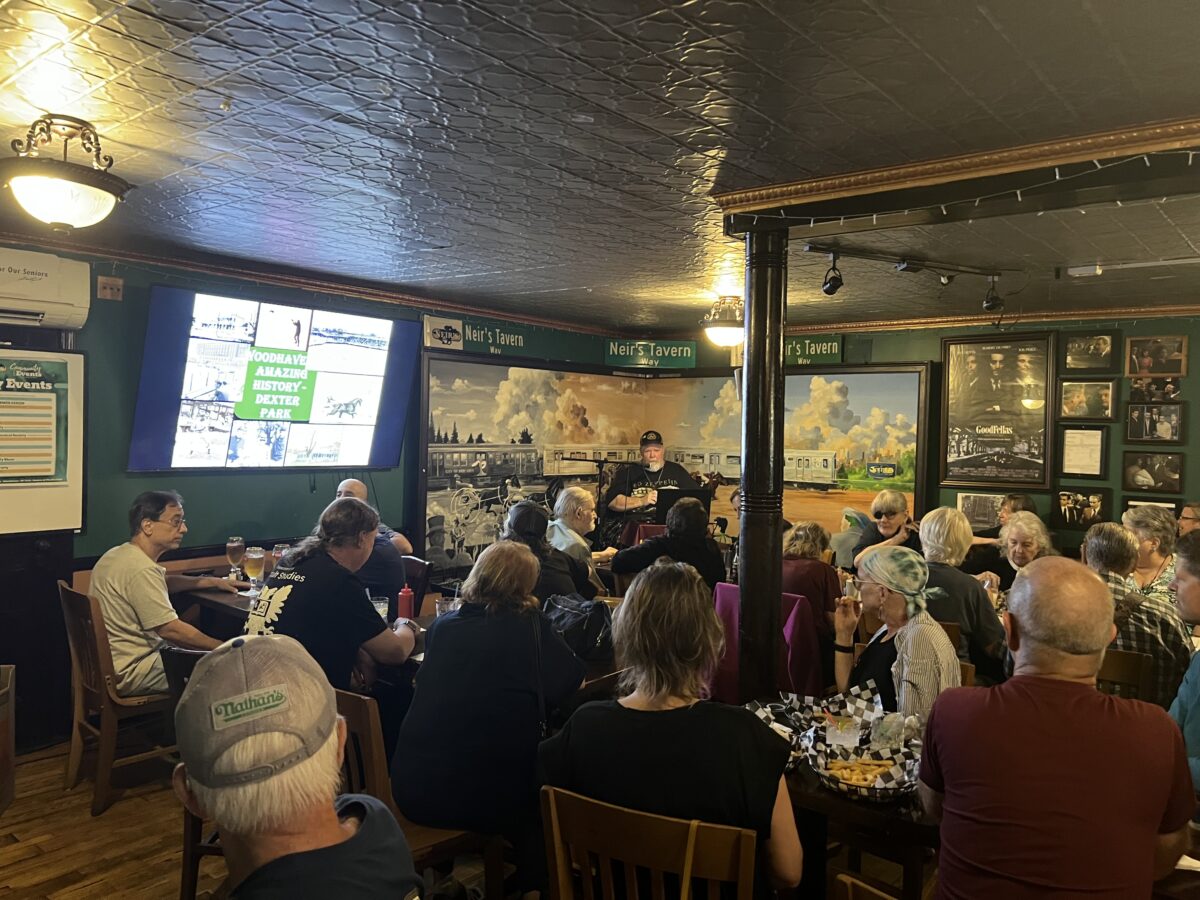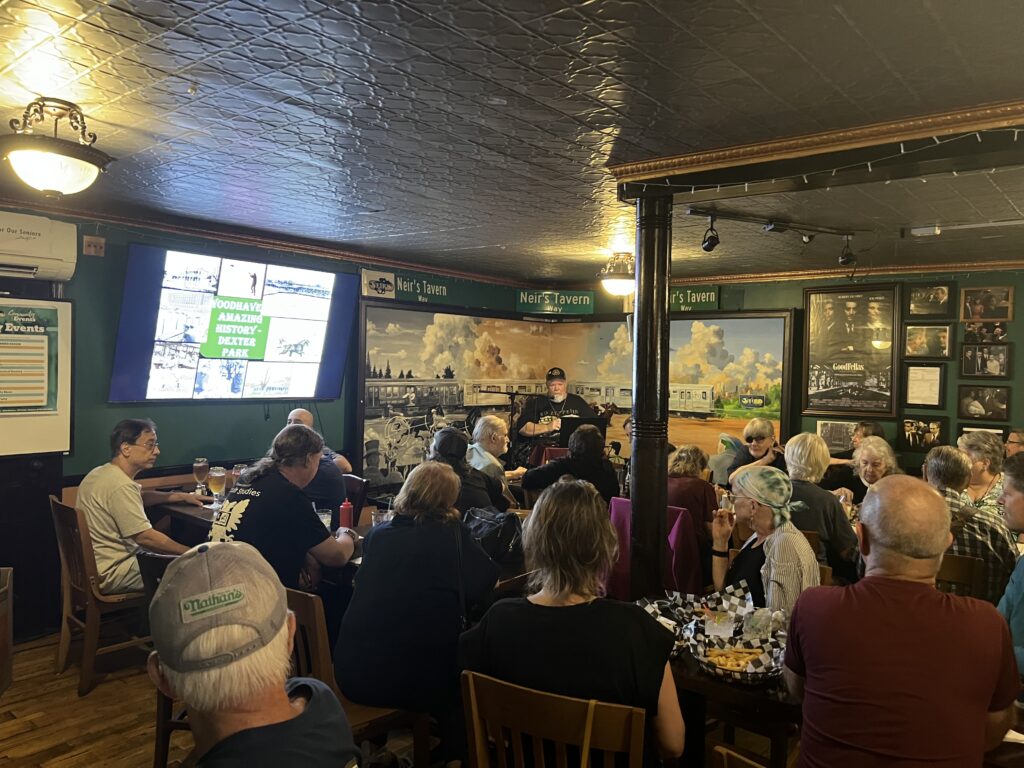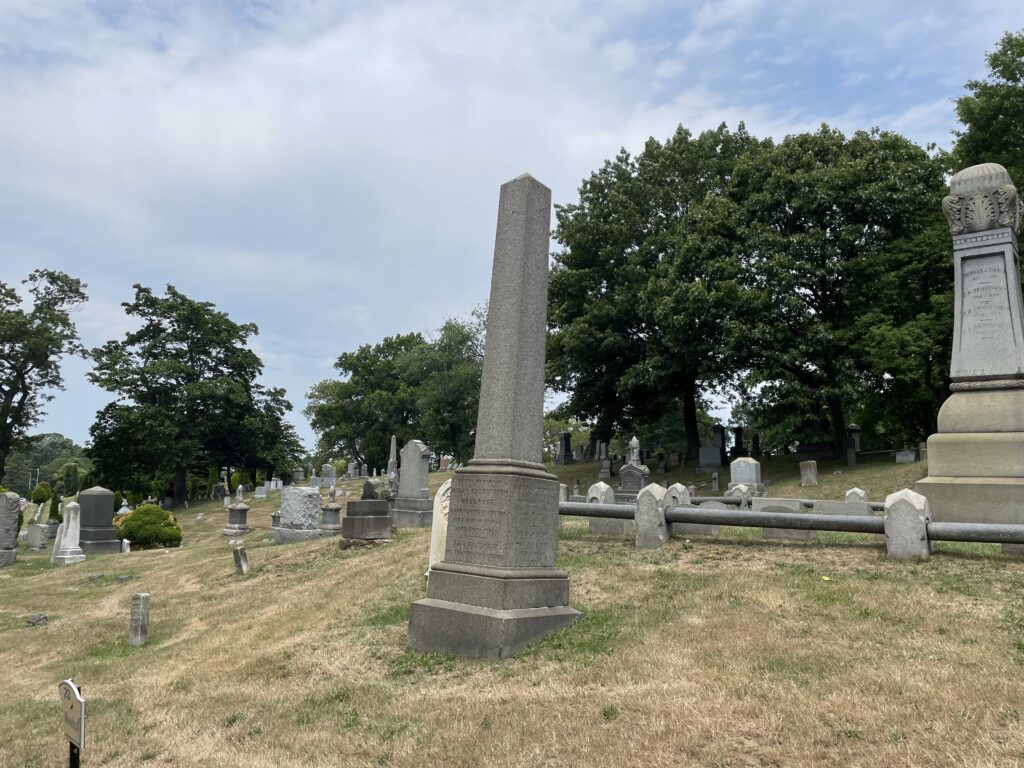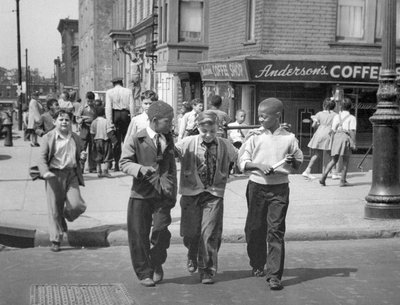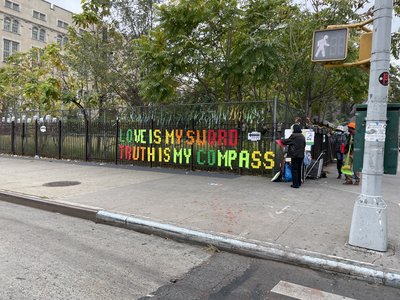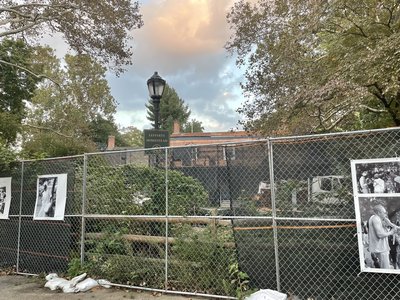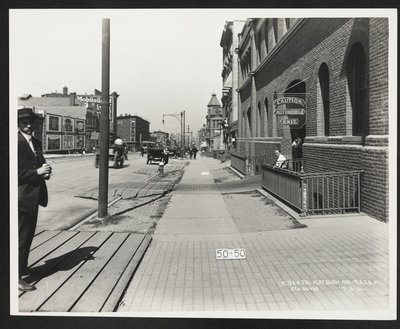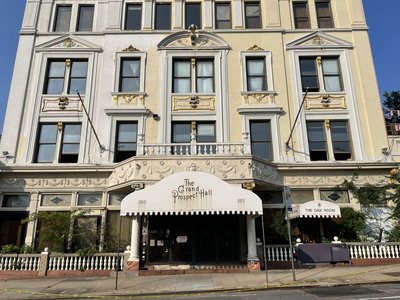This Retired Jockey Has Many Stories To Tell
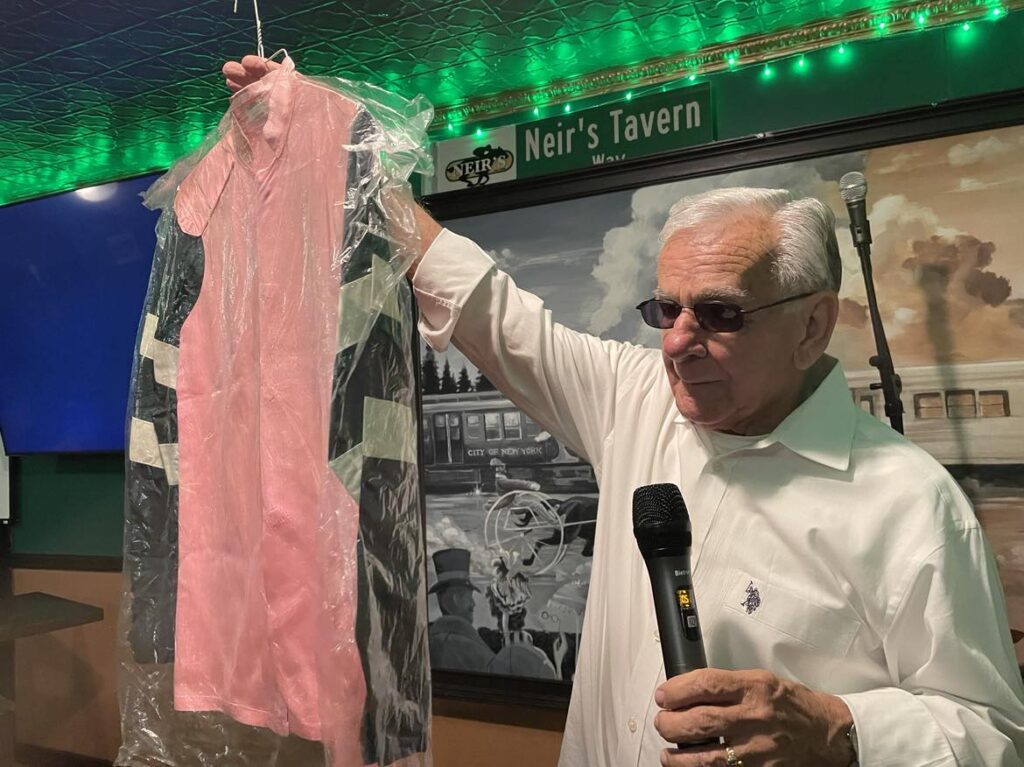
Woodhaven native and longtime jockey Alfred J. “Rocky” Hanan (white shirt, center) and fans gathered at Neir’s Tavern this week for a celebration of the sport of horse racing. Rocky entertained the crowd with tales on and off the track, including a memorable encounter with the legendary Mae West.
By Ed Wendell | projectwoodhaven@gmail.com
Woodhaven has a wonderful pedigree in horse racing dating back to 1821, when the Union Course racetrack opened (after 2 decades of horse racing being illegal in New York State). Within 2 years, a crowd of over 60,000 people came to Woodhaven to view and bet on the outcome of the race between American Eclipse and Sir Henry.
The hero of that story was the jockey who rode Eclipse to victory, a man named Samuel Purdy. He took over the reins for the 2nd and 3rd heat that day and his maneuver during the last lap of the second heat to take the lead was discussed and praised by horse racing fans for decades.
This week, Woodhaven’s grand history of horse racing gained another chapter, and another character, when Alfred J. “Rocky” Hanan came to Neir’s Tavern for a “Night at the Races.” Hanan, a Woodhaven native who was a jockey for many decades, entertained the crowd with tales on and off the track.
Rocky was a small lad for 13 years old, just 80 pounds soaking wet. He was on the street with some pals, smoking, when two men told him to get rid of the cigarette. Rocky was a bit of a wiseguy and told them where to get off.
The two men, brothers as it turned out, sized the young man up and saw potential. They spoke to young Rocky’s mother and confirmed that he was only 13.
“We have connections with people at the race track,” they told her, “and we might be able to get him a spot with a good outfit.”
By the time Rocky was 14 he was riding for Greentree Stud and Stable, a very successful thoroughbred racing and breeding stable. And that was what Rocky did for decades, before retiring and becoming a horse trainer, something he still does now in his 80s.
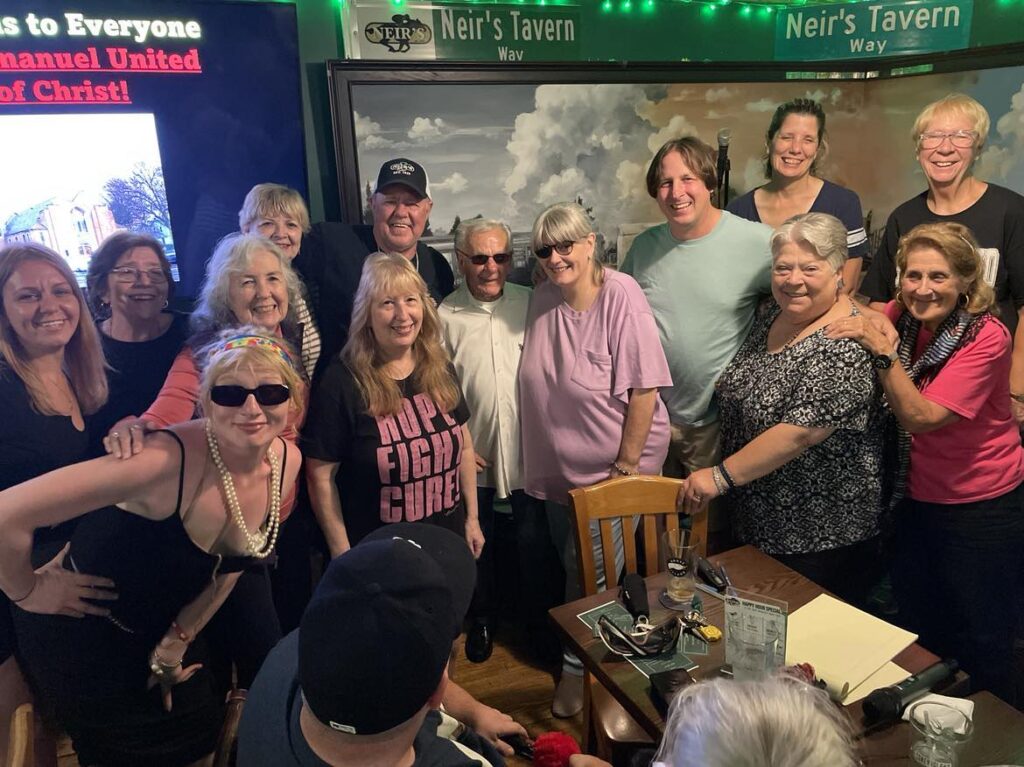
Woodhaven native and longtime jockey Alfred J. “Rocky” Hanan (white shirt, center) and fans gathered at Neir’s Tavern this week for a celebration of the sport of horse racing. Rocky entertained the crowd with tales on and off the track, including a memorable encounter with the legendary Mae West.
Rocky spoke to the crowd at Neir’s about the thrill of riding a horse and his affection for the sport. “”It was a love that you can’t beat,” he said. “It was never a job, it was fun; it was wonderful!”
Rocky brought along a suitcase full of racing memories, including his racing cap, colors, a whip and goggles, which was a necessity when it rained.
“When it rained hard, you’d wear 4 or 5 pairs of goggles at once. And as you’re going round those turns, and the horses in front of you are kicking up that mud, you had to reach up with one finger and pull down one pair, leaving you with a few more clean pairs covering your eyes. And you’re doing this with your hands full, in the pouring rain, on a horse running at full speed!”
Rocky spoke lovingly of horses, but none more than Secretariat, who he never rode, but said was the nicest, classiest and smartest horse he’d ever witnessed.
“I’ve never seen a horse in my entire life like Secretariat. I would have given anything just to sit on him! And he was a smart horse; he watched everything around him. He’d be grazing and a plane would fly high overhead, and he’d pick his head up and follow the plane with his eyes!”
As a longtime resident of Woodhaven, Rocky had the pleasure of meeting one of its most famous residents, though he didn’t know it at the time.
“I was 8 years old and on Saturdays I’d go door to door collecting for the Long Island Press. One day, I’m at a house on 88th Street and a lady opens the door and tells me to come in. Turns out she had a house full of people and she brought me in and said to them ‘Ooh, isn’t he cute, look at the size of him!”
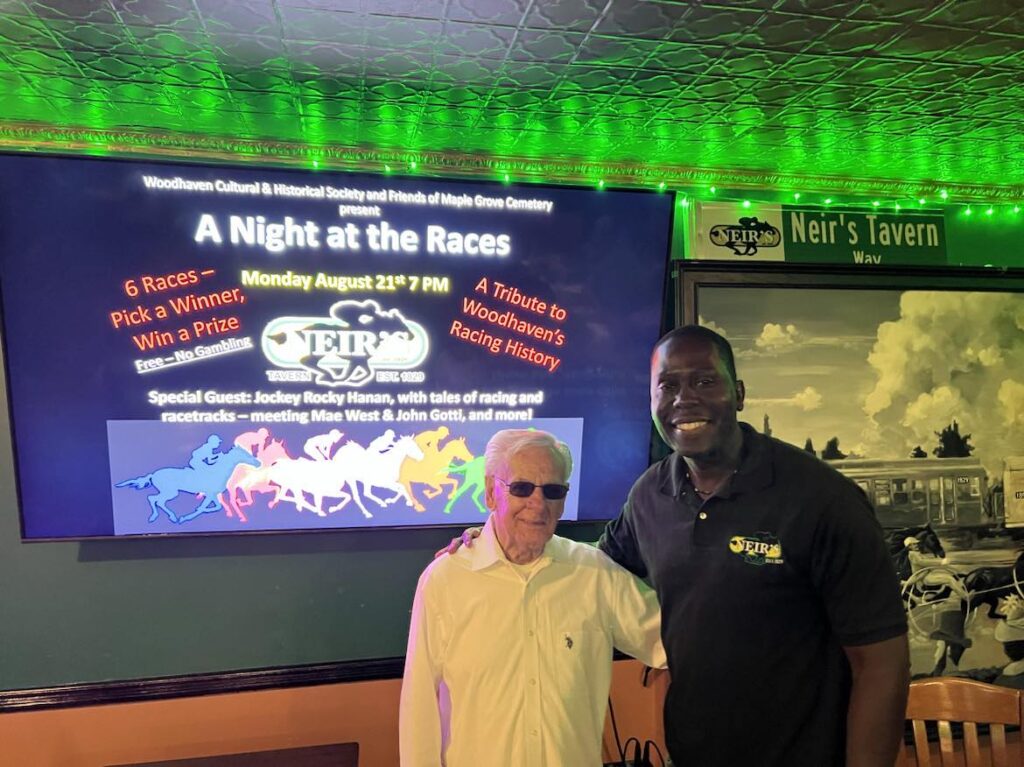
Alfred J. “Rocky” Hanan and Loycent Gordon, owner of Neir’s Tavern, celebrating the sport of horse racing in Woodhaven, right across the street from where the famed Union Course Racetrack used to sit (1821-1870).
As he was leaving the house, the woman paid the bill and gave him a dollar tip, which was a lot of money for a kid back then. “I thought I was a millionaire!” he said.
Only later on, did he find out whose house that was, and who gave him the dollar, it was none other than Mae West!
Life is like a horse race, you never know what’s going to happen. A chance encounter on the street led to a lifetime of love and thrills for a local boy from Woodhaven and he has no regrets.
“If I had to live ten more lifetimes I’d do it all over again!” Rocky said.

